Why this resume works
- Quantifies accomplishments: Accomplishments such as reducing shipping costs by 15% and improving delivery times by 20% through data analysis showcases the applicant’s impact and value.
- Showcases career progression: Starting as a warehouse supervisor and progressing to logistics coordinator highlights increasing levels of responsibility in their career trajectory.
- Uses action-oriented language: Using action verbs like “coordinated” and “implemented” on their resume, the applicant conveys initiative and effectiveness.
More Logistics Coordinator Resume Examples
Check out these logistics coordinator resume examples to see how to showcase your organizational skills, supply chain knowledge, and problem-solving abilities. Use these samples to help you create a resume that attracts employers in the logistics industry.
Entry-level logistics coordinator
Why this resume works
- Centers on academic background: The applicant’s education section proudly showcases a Master of Business Administration in Logistics and Supply Chain Management, emphasizing their academic preparation early in their logistics career.
- Effective use of keywords: Strategically incorporating industry-relevant keywords like “supply chain optimization” and “inventory management” helps the applicant’s resume navigate through ATS filters effectively.
- Shows digital literacy: By implementing real-time tracking systems, the applicant highlights their grasp of essential computer skills necessary for today’s digital-savvy work environments.
Mid-level logistics coordinator
Why this resume works
- Points to measurable outcomes: Reducing delivery delays by 15% and cutting costs by 10% shows the applicant’s impact through clear, measurable outcomes.
- Demonstrates language abilities: Language skills in Spanish, French, and German aids effective cross-cultural communication in logistics roles.
- Displays technical expertise: Expertise with ERP software like SAP and Oracle, along with certifications like Lean Six Sigma Green Belt, highlights strong technical skills.
Experienced logistics coordinator
Why this resume works
- Lists relevant certifications: By listing certifications like Certified Supply Chain Professional, the applicant shows their expertise and commitment to growth.
- Showcases impressive accomplishments: Achievements such as boosting delivery speed by 25% reflect significant impact in logistics.
- Focuses on work history: The applicant uses a chronological resume format, emphasizing a steady career progression that showcases deep industry experience over 15 years.
Logistics Coordinator Resume Template (Text Version)
Jane Johnson
Portland, ME 04103
(555)555-5555
Jane.Johnson@example.com
Professional Summary
Experienced logistics coordinator skilled in inventory management, route planning, and cost reduction strategies. Proven track record of improving operational efficiency and reducing costs by up to 20%. Highly proficient in data analysis and supply chain optimization.
Work History
Logistics Coordinator
Velocity Transport Solutions – Portland, ME
August 2023 – August 2025
- Reduced shipping costs by 15% through route optimization.
- Coordinated daily logistics operations for 50+ shipments.
- Maintained inventory accuracy of 99% with regular audits.
Supply Chain Analyst
Global Logistics Inc. – Portland, ME
August 2021 – July 2023
- Improved delivery times by 20% through data analysis.
- Managed supplier relationships to ensure timely deliveries.
- Streamlined warehouse operations, increasing efficiency by 10%.
Warehouse Supervisor
Efficient Storage Solutions – Portland, ME
August 2020 – July 2021
- Oversaw daily operations of a 100,000 sq. ft. warehouse.
- Implemented safety protocols, reducing accidents by 30%.
- Improved order fulfillment rates to 95% accuracy.
Skills
- Inventory Management
- Route Planning
- Supply Chain Optimization
- Vendor Management
- Warehouse Operations
- Data Analysis
- Cost Reduction Strategies
- Safety Protocols Implementation
Education
Master’s Degree Logistics and Supply Chain Management
University of California, Berkeley Berkeley, California
June 2020
Bachelor’s Degree Business Administration
San Francisco State University San Francisco, California
June 2018
Certifications
- Certified Logistics Associate (CLA) – Manufacturing Skill Standards Council
- Six Sigma Green Belt – American Society of Quality
- Certified Supply Chain Professional (CSCP) – APICS
Languages
- Spanish – Beginner (A1)
- Mandarin – Beginner (A1)
- German – Intermediate (B1)
Related Resume Guides
Advice for Writing Your Logistics Coordinator Resume
Discover essential tips on how to write a resume tailored just for your profession.
Learn how to highlight the skills and experiences that make you a standout candidate in the world of logistics, ensuring your resume opens doors to exciting opportunities.
Highlight your most relevant skills
Listing relevant skills when applying for a job is important because it shows employers that you have the abilities needed to do the job well.
For a logistics coordinator, it’s good to list a mix of technical skills like supply chain management and inventory control, as well as soft skills like communication and problem-solving. Creating a dedicated skills section on your resume helps highlight these abilities quickly for hiring managers.
Including key skills in your work experience section can make an even stronger impact. Instead of just listing duties, mention specific skills you used and how they helped achieve goals or solve problems. For example, if you managed shipping schedules effectively, say so clearly.
This approach not only shows what you’ve done but also how well you’ve done it, making your application stand out more.
A resume format that highlights organizational skills, efficiency metrics, and problem-solving abilities can set logistics coordinators apart.
Showcase your accomplishments
When showcasing your accomplishments as a logistics coordinator, organize your work experience in reverse-chronological order. This means starting with your most recent job and working backward. For each job entry, include the job title, employer name, location, and employment dates. This format helps hiring managers quickly see your career progression and current skills.
Instead of just listing tasks you did at each job, focus on what you achieved by doing them. Use numbers to show how well you did your work. For example, mention if you improved delivery times by 20% or cut costs by $10,000 annually. Turning duties into achievements shows employers the difference you made in your past jobs.
Use strong action words like “improved,” “reduced,” or “increased” to describe what you’ve done as a logistics coordinator. Highlighting these achievements lets hiring managers know exactly what impact you’ve had and shows off your skills clearly. Quantified accomplishments make it easy for them to see why you’d be a great fit for their team.
5 logistics coordinator work history bullet point examples
- Coordinated daily logistics operations for a fleet of 50+ vehicles, improving on-time delivery rate by 25%.
- Streamlined warehouse inventory processes, reducing stock discrepancies by 40% and improving order accuracy.
- Implemented a new vendor management system, resulting in a 20% cost reduction in supply chain expenses.
- Led cross-functional teams to execute logistics projects, achieving a 30% increase in distribution efficiency.
- Analyzed shipping data to identify trends and optimize routes, cutting transportation costs by $100K annually.
When choosing a resume template, opt for one with clear sections and simple fonts. Limit colors and fancy designs to ensure hiring managers can quickly assess your skills and experience.
Write a strong professional summary
A professional summary introduces your career to hiring managers, giving them a quick snapshot of your qualifications. This opening statement helps them decide if your experience aligns with what they need. When creating a resume, you can choose between a professional summary or a resume objective, depending on your career stage and goals.
The professional summary is a three to four sentence section that highlights your experience, skills, and achievements. It’s best suited for those with relevant work history who want to show their professional identity and the value they bring to the role. For logistics coordinators, it can emphasize expertise in supply chain management, organization, and problem-solving skills.
Resume objectives focus on career goals rather than past accomplishments. They work well for entry-level applicants, career changers, or those with employment gaps. While summaries answer “what I’ve done,” objectives explain “what I aim to contribute.”
Next, we’ll explore examples of both summaries and objectives tailored to different levels of experience.
Logistics coordinator resume summary examples
Entry-level
Recent graduate with a Bachelor of Science in Logistics and Supply Chain Management. Completed coursework in transportation systems, inventory control, and logistics technology. Holds certification in logistics management from APICS and eager to apply foundational skills in coordinating shipments, tracking inventory levels, and optimizing supply chain processes.
Mid-career
Logistics coordinator with over six years of experience managing domestic and international shipments for retail companies. Expertise in vendor negotiation, freight cost analysis, and ensuring timely deliveries. Successfully implemented a new inventory management system that reduced stock discrepancies by 30%. Known for strong organizational skills and ability to work under pressure.
Experienced
Seasoned logistics coordinator with 15+ years leading cross-functional teams to streamline supply chain operations across multiple industries. Specialized in lean logistics practices, demand forecasting, and strategic vendor partnerships. Implemented process improvements resulting in a 20% reduction in shipping costs annually. Committed to driving efficiency while maintaining high customer satisfaction standards.
Logistics coordinator resume objective examples
Entry-level
Detail-oriented recent logistics management graduate eager to start a career as a logistics coordinator. Skilled in supply chain processes and inventory control, seeking to contribute to efficient operations and improve organizational productivity.
Career changer
Results-driven professional transitioning from retail management to logistics coordination. With strong organizational skills and experience in team leadership, aims to streamline distribution processes and improve supply chain efficiency in a dynamic logistics environment.
Entry-level
Ambitious individual with a background in business administration looking to begin a career as a logistics coordinator. Passionate about leveraging problem-solving abilities and analytical skills to support effective supply chain solutions and drive operational success.
Want to highlight your logistics experience clearly? Use our Resume Builder to organize your skills and work history in a way that grabs attention fast.
Match your resume to the job description
Tailoring your resume to the job description is important because it helps you stand out and pass through applicant tracking systems (ATS). Employers use ATS to scan resumes for keywords and phrases from job postings. If your resume doesn’t include these keywords, it might not even be seen by a human. A targeted resume ensures you highlight the skills and experiences that matter most to the employer.
An ATS-friendly resume incorporates keywords from the job description that align with your skills. This increases your chances of being noticed by hiring managers. For example, if you’re applying for a logistics coordinator position, including terms like “supply chain management” or “inventory control” can make your resume be accepted in an ATS scan.
To find keywords in a job posting, look for repeated skills, qualifications, and duties. Pay attention to specific phrases like “supply chain optimization,” “order processing,” or “logistics planning.” Using exact words shows you understand what the employer is looking for.
Incorporate these terms naturally into your resume. For instance, rewrite “Managed inventory” to “Managed inventory control processes to ensure efficient supply chain operations.” This approach shows you are directly addressing the job’s needs.
By choosing to customize your resume, you improve ATS compatibility, making it more likely you’ll get an interview. By using relevant keywords and aligning your experiences with the job description, employers will see you as a strong match for their open positions.
Try our ATS Resume Checker to find 30+ common mistakes in your resume’s format and content. Get quick tips on how to boost your resume score now.
FAQ
Do I need to include a cover letter with my logistics coordinator resume?
Including a cover letter with your logistics coordinator resume can positively impact your application.
A cover letter allows you to highlight specific skills related to supply chain management and coordination that might not be fully captured in your resume.
You can address particular achievements, such as improving efficiency or reducing costs in previous roles, which align with the job description at hand.
Consider using our Cover Letter Generator to create a customized document that complements your resume, ensuring it reflects your unique strengths and experiences in logistics.
Additionally, reviewing cover letter examples tailored to logistics roles can provide inspiration and guidance for crafting a compelling narrative that resonates with prospective employers.
How long should a logistics coordinator resume be?
For a logistics coordinator, a concise one-page resume is often ideal for summarizing your skills in inventory management, shipping coordination, and vendor relations. This format allows you to highlight your organizational abilities and efficiency clearly.
However, if you have extensive experience or multiple relevant certifications, a two-page resume might be more appropriate. Make sure every detail included emphasizes your expertise in logistics and supply chain management.
Check out our guide on how long a resume should be for examples and tips on finding the right length for your career stage.
How do you write a logistics coordinator resume with no experience?
To craft a resume with no experience for a logistics coordinator position, highlight your transferable skills, relevant coursework, and activities that show your potential in the role.
- Highlight education and relevant courses: Start with your degree and include any logistics-related coursework or projects. Mention classes like supply chain management or operations planning that align with the logistics field.
- Showcase transferable skills: Focus on abilities such as organization, attention to detail, communication, and problem-solving. These are important for a logistics coordinator position.
- Include volunteer work or internships: If you’ve volunteered at events or completed internships where you managed tasks like scheduling or inventory control, list these experiences. They show practical application of logistics concepts even if not formal employment.
- Use a functional resume format: This type of resume allows you to organize content by skill sets rather than chronological job history, highlighting what you can bring to the table despite not having direct experience.
Check out our guide on creating a resume with no experience for more examples and expert advice tailored to entry-level job seekers.
Rate this article
Logistics Coordinator
Additional Resources
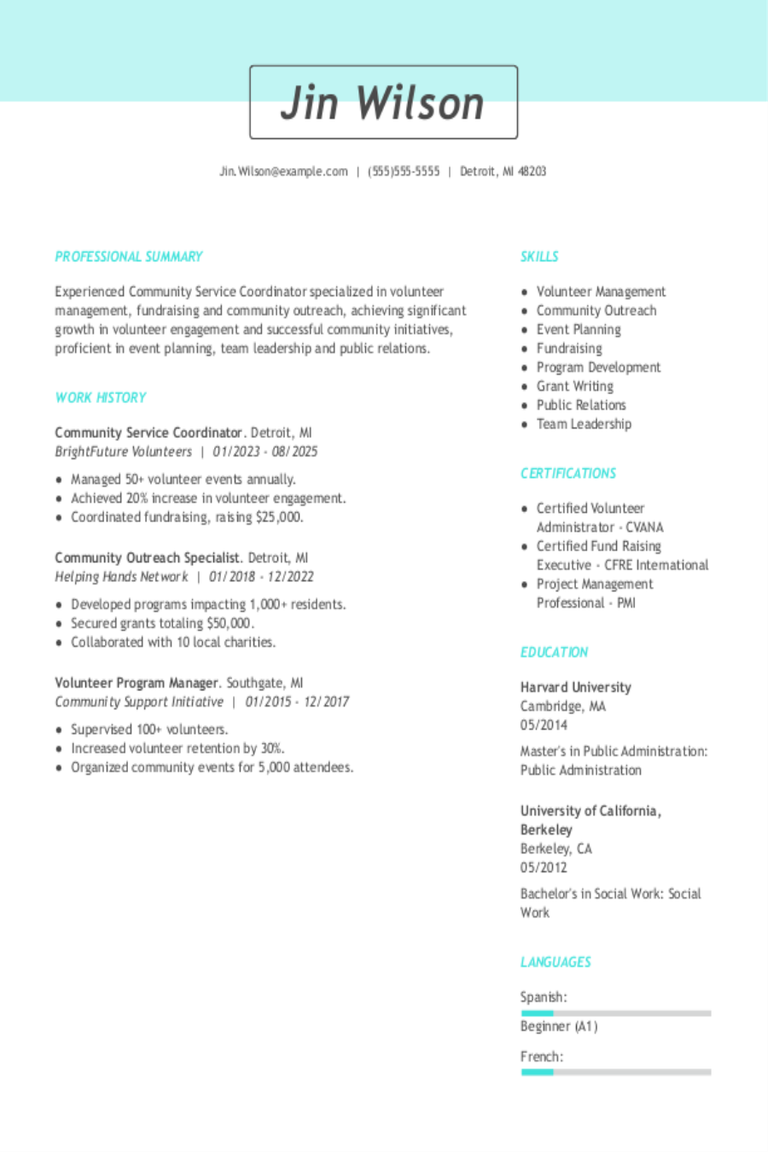
Community Service Coordinator Resume Examples & Templates for 2025
Explore community service coordinator resume examples and learn how to highlight your passion for helping others and your ability to organize successful projects.Build my resumeImport existing resumeCustomize this templateWhy this
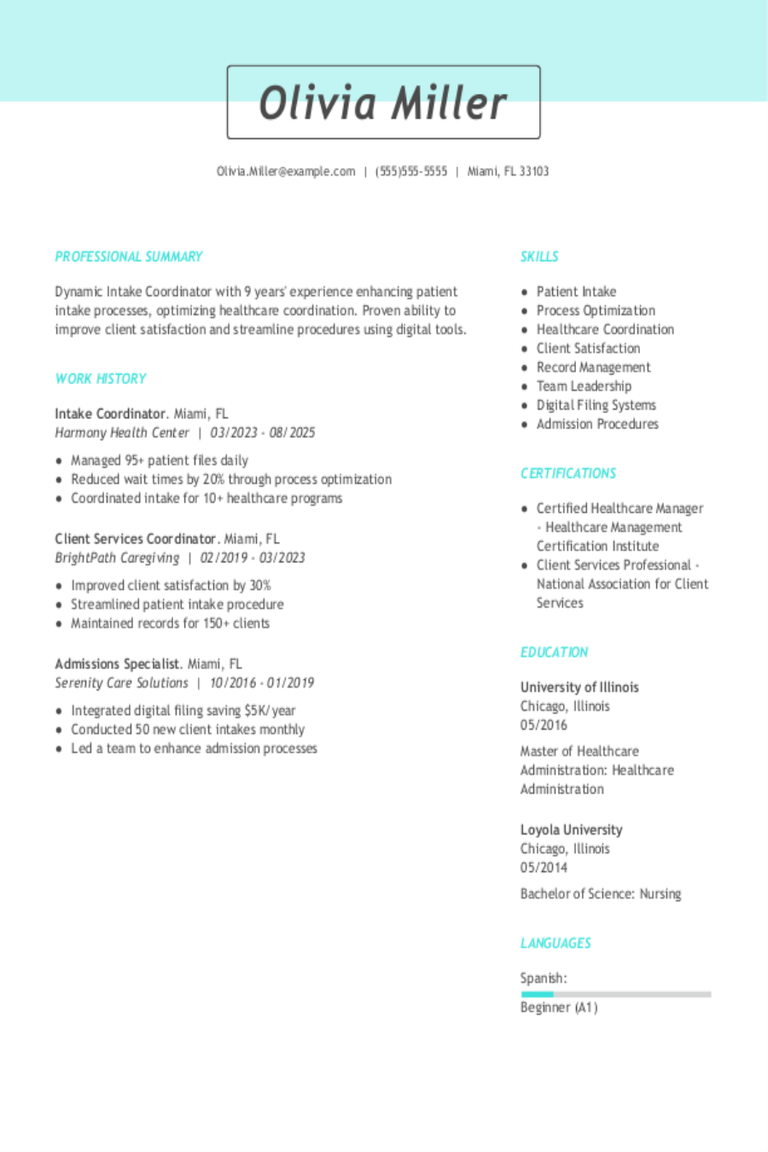
Intake Coordinator Resume Examples & Templates for 2025
Explore intake coordinator resume examples that focus on experience organizing patient information, managing schedules, and ensuring smooth communication. Learn how to highlight your ability to handle details and support healthcare
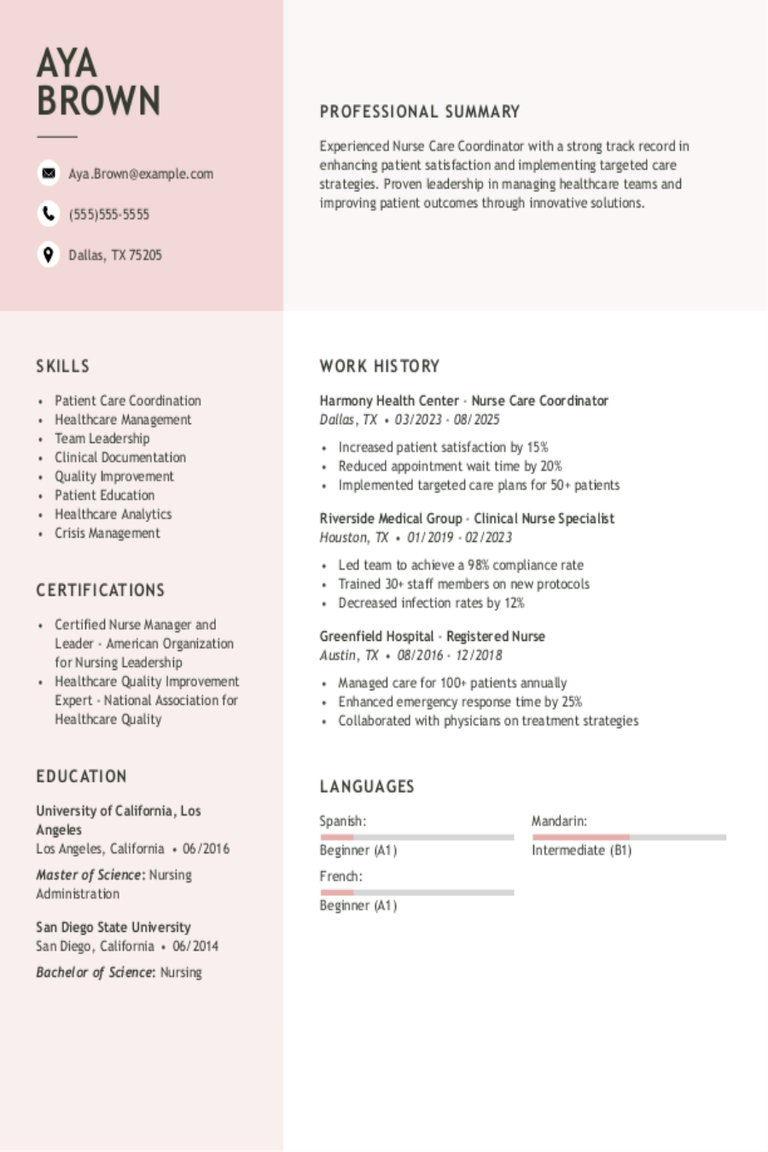
Nurse Care Coordinator Resume Examples & Templates for 2025
Discover how nurse care coordinators can showcase their skills in patient care and teamwork on a resume. Use our resume examples and tips to help you highlight your experience in
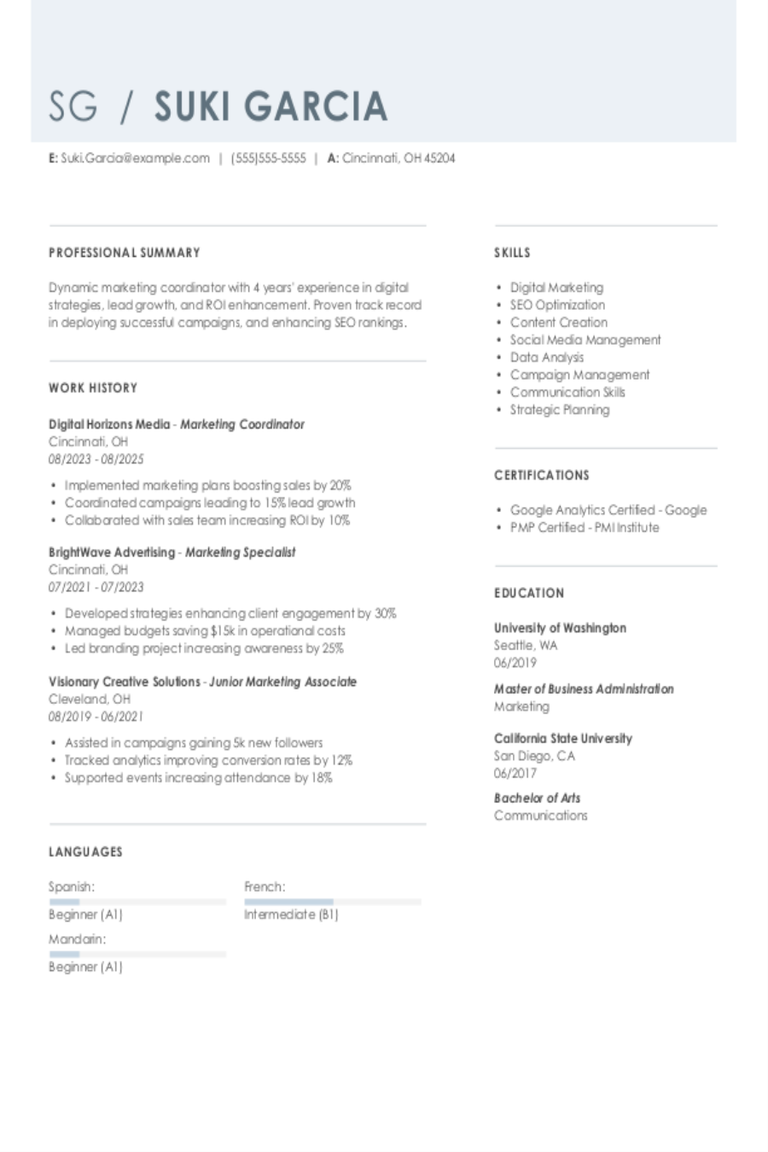
Marketing Coordinator Resume Examples & Templates for 2025
Explore marketing coordinator resume examples to see how to showcase your experience planning events and running campaigns. Browse tips on how to make a resume that shows off your skills
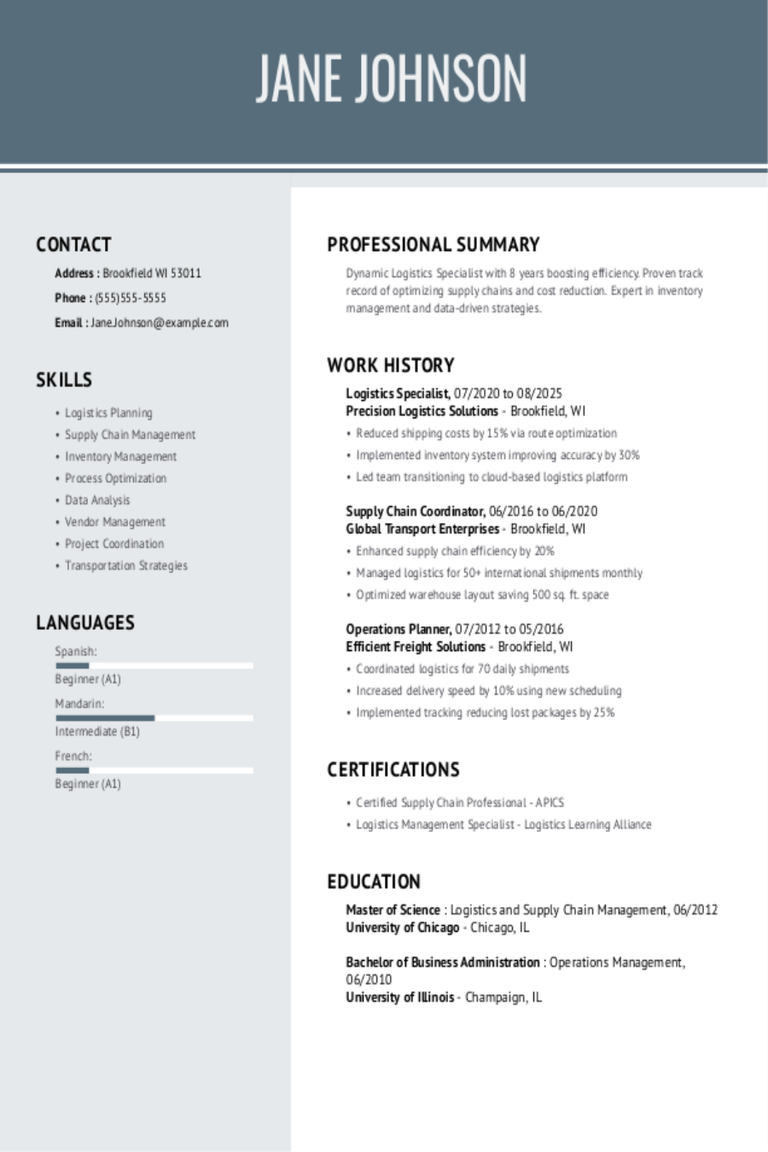
Logistics Specialist Resume Examples & Templates for 2025
As a logistics specialist, your resume should show how you plan shipments, manage inventory, and solve problems. Use our examples to help you highlight organization and teamwork without sounding too
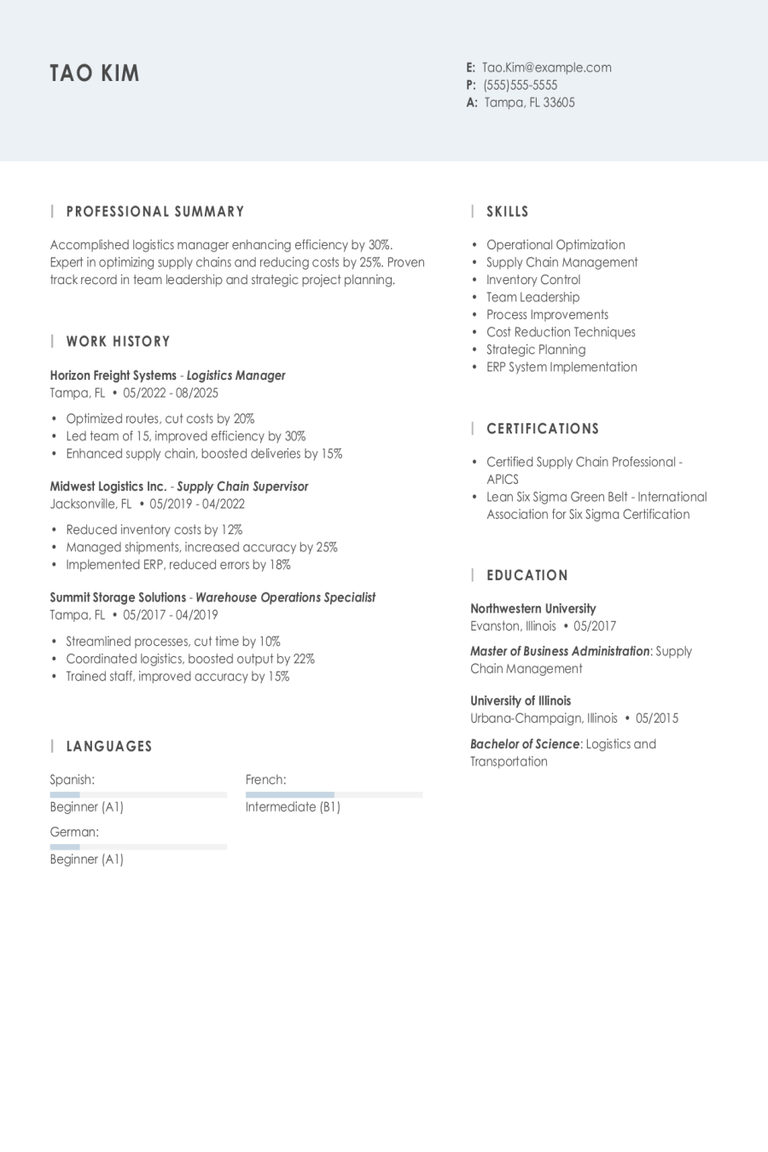
Logistics Manager Resume Examples & Templates for 2025
As a logistics manager, your resume needs to highlight more than just moving goods. Learn to showcase your skills in planning, problem-solving, and keeping operations smooth and efficient.Build my resumeImport
